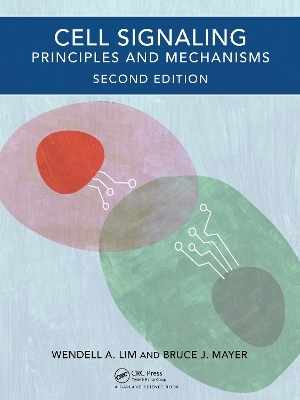Cell Signaling provides undergraduate and graduate students with the conceptual tools needed to make sense of the dizzying array of pathways that cells use to detect, process, and respond to signals from the environment. By emphasizing the common design principles and molecular processes that underlie all signaling mechanisms, the book develops a broad conceptual framework through which students can understand diverse signaling pathways and networks. The book first examines the common currencies of cellular information processing and the core components of the signaling machinery. It then shows how these individual components link together into networks and pathways to perform more sophisticated tasks. Many specific examples are provided throughout to illustrate common principles, and to provide a comprehensive overview of major signaling pathways.
Thoroughly revised, this second edition includes two new chapters and substantial updates to the text and figures throughout the book.
Key features:
The book provides a conceptual framework through which all signaling pathways can be understood without memorization of details
It is extensively illustrated, including high-quality diagrams and schematics to elucidate important concepts and processes
Each chapter concludes with a useful summary section that brings together the key concepts
End-of-chapter review questions test the reader’s understanding of the material covered
Two new chapters have been written especially for this edition: "Signaling and Disease" and "Diversity in Signaling across Phylogeny"
Wendell A. Lim is Professor of Cellular and Molecular Pharmacology at the University of California, San Francisco. The principal focus of his research is the structure and mechanism of protein interaction domains and the logic by which these components are used to build complex cellular signaling systems. Bruce J. Mayer is Professor of Genetics and Genome Sciences at the University of Connecticut, School of Medicine. Current work of his group focuses on characterizing and manipulating tyrosine kinase–mediated signal transduction pathways.
1. Introduction to Cell Signaling. 2. Principles and Mechanisms of Protein Interactions. 3. Signaling Enzymes and Their Allosteric Regulation. 4. Role of Post-Translational Modifications in Signaling. 5. Subcellular Localization of Signaling Molecules. 6. Second Messengers: Small Signaling Mediators. 7. Membranes, Lipids, and Enzymes that Modify Them. 8. Information Transfer Across the Membrane. 9. Regulated Protein Degradation. 10. The Modular Architecture and Evolution of Signaling Proteins. 11. Information Processing by Signaling Devices in Networks. 12. Signaling and Disease. 13. Diversity of Signaling Across Phylogeny 14. How Cells Make Decisions. 15. Methods for Studying Signaling Proteins and Networks.
| Erscheinungsdatum | 02.11.2024 |
|---|---|
| Zusatzinfo | 13 Tables, color; 314 Line drawings, color; 56 Halftones, color; 370 Illustrations, color |
| Verlagsort | London |
| Sprache | englisch |
| Maße | 210 x 280 mm |
| Gewicht | 1192 g |
| Themenwelt | Naturwissenschaften ► Biologie ► Genetik / Molekularbiologie |
| Naturwissenschaften ► Biologie ► Zellbiologie | |
| ISBN-10 | 0-367-27937-1 / 0367279371 |
| ISBN-13 | 978-0-367-27937-0 / 9780367279370 |
| Zustand | Neuware |
| Informationen gemäß Produktsicherheitsverordnung (GPSR) | |
| Haben Sie eine Frage zum Produkt? |
aus dem Bereich




